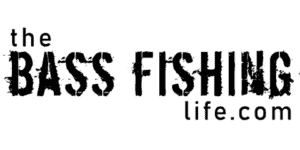Largemouth bass love to bury up in heavy cover. They do this for protection from the sun and other predators. Bass also like heavy cover because often there is abundant prey hiding there.
To catch bass from heavy cover an angler must use heavier hooks, lines, and rods. Hollow-body frogs and Texas-rigged plastics are excellent for thick vegetation while jigs and soft plastics work well in brush.
Deciphering the type of cover is key to picking the right lures to get the job done.
Cover vs Structure and Bass Fishing
These terms are often interchanged and used incorrectly.
Structure refers to the lake or riverbed and its composition. Think of a bowl full of water. The actual bowl would be the structure.
Anything you put inside that bowl – sticks, weeds, brush – would be the cover.
This article will focus on bass fishing thick and nasty cover that is sitting upon some sort of structure.
The Equipment Needed to Bass Fish Heavy Cover
While there are times when it is preferable to let a bass run and let the drag do the work, this is not one of them.
When a bass is nestled deep inside heavy cover an angler needs to keep them coming to the boat immediately and not turn their head. If that fish can change direction and bury up deeper into the brush or vegetation, the odds of it coming off increase exponentially.
Because of this, most anglers who probe heavy cover consistently will use rods with a power rating that is either Xtra-Heavy, Heavy, or at times Medium Heavy. The action rating will usually be Fast or Extra-Fast.
This power and action combination will allow the backbone of the rod to engage almost instantly and winch the bass out of that stuff.
This is also the time to use heavy lines like braid. When fishing in the thickest stuff I will usually start with 50 lb braid on the low-end and go up from there.
Fishing heavy cover also means I will have the highest gear-ratio reel I own matched with the appropriate rod. I want to recover the line as fast as possible to keep the fish from turning and burying up. Most heavy cover anglers will also crank the reel’s drag as tight as it will go. Once again, this is to keep the bass from getting deeper into the grass or brush and pulling off.
Proper Hook Selection When Fishing Heavy Cover
This is not the time for light-wire hooks.
Heavy gauge hooks will handle the rigorous demands of fishing both vegetation and wood.
The powerful hookset required to stick a bass immediately when fishing like this can often bend a light-wire hook. The result? Lost fish.
As far as the style of hook, I prefer a traditional straight-shank flipping hook. The space between the shank and the bend allows for plenty of room to get the hook point in position.
Most often an angler fishing heavy cover will set the hook with a straight vertical motion, not a side sweep. This also plays right into the strengths of a straight shank hook.
I have caught plenty of bass in heavy cover with both the wide-gap and offset styles, but the hookup ratio for me is best with the straight-shank.
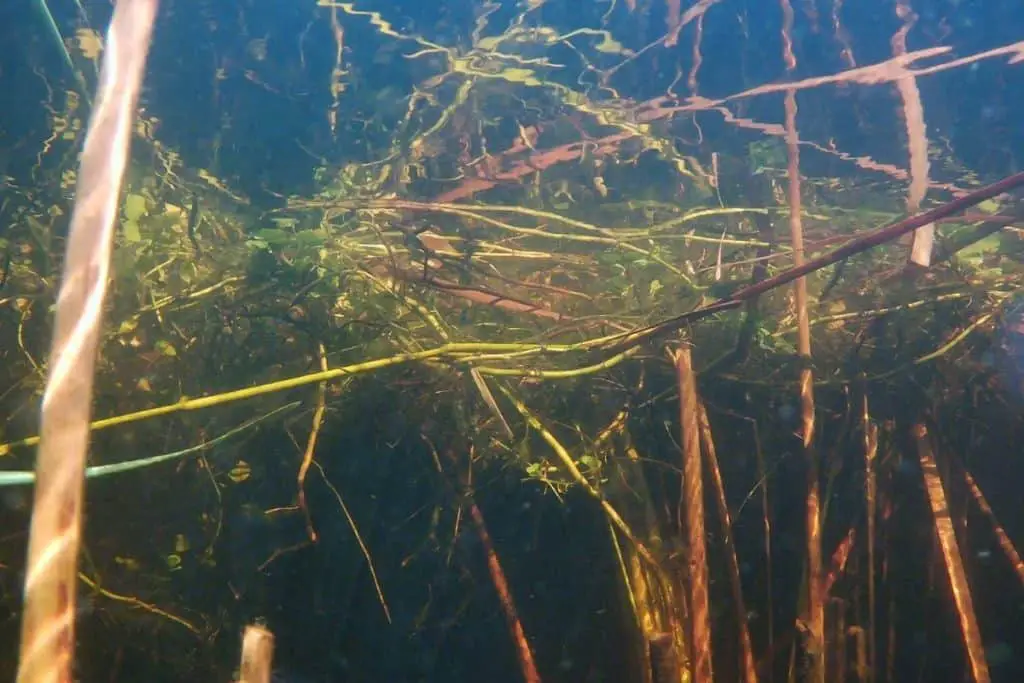
Choose the Lure Based on the Cover
When it comes to heavy cover we break it down into two categories – vegetation and wood.
Bass Fishing Heavy Vegetation
Most often when anglers run across these conditions, they will be fishing shallow water.
Heavy vegetation can be emergent when fishing lily pads or milfoil that has spilled over the water’s surface. It can also be submerged and just under the surface. The endless hydrilla fields in Florida come to mind when thinking of this type of thick vegetation.
If the weeds are across the surface of the water I narrow my choices down to the following lures: a hollow-body frog, Texas-rigged plastics, and even a punching rig – basically a Texas-rigged plastic with a very, very heavy weight. The tungsten weights I use for punching are often 1 oz or greater.
Which Lure Should I Use for Each Type of Vegetation?
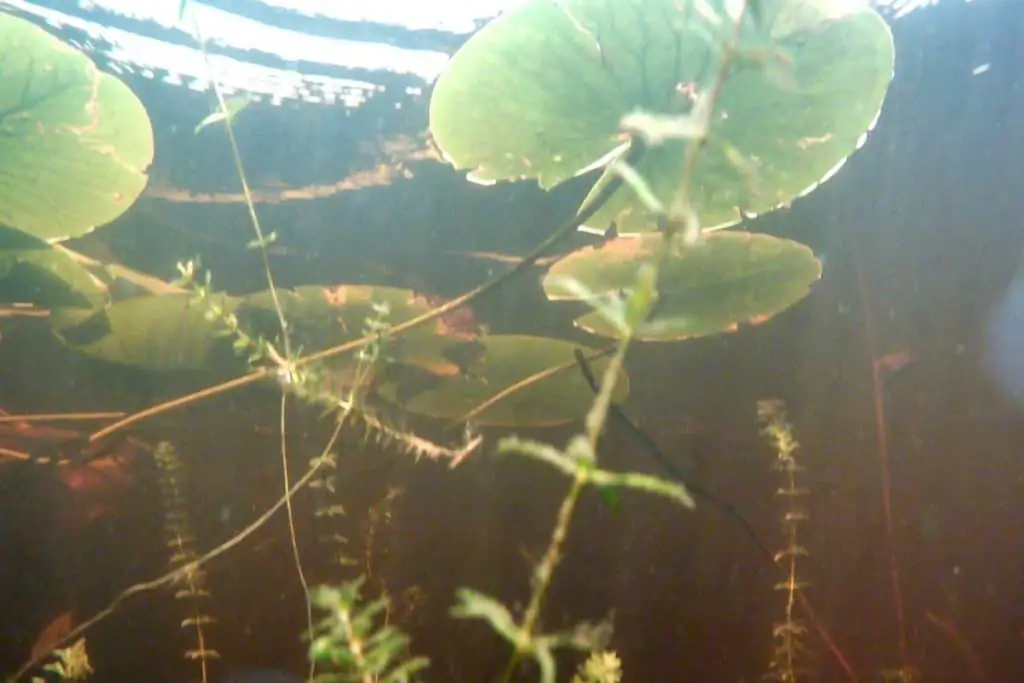
Emergent Vegetation
When the weeds are emergent and creating thick mats on the surface of the water I prefer to use a hollow-body frog or drag a plastic over the top. Big worms and soft jerkbaits are two of my favorites.
These are also perfect lure choices if you are trying to cover water and locate bass across a wide expanse of emergent vegetation.
Isolated Patches
If I am fishing more sparse vegetation, yet it is still thick and most likely holding bass, then I will start to pick it apart with Texas rigs, Jigs, or a punch rig if the vegetation is still emergent.
A punch rig does exactly what it sounds like – punching its way through the top layer of green stuff.
A punch rig is an excellent choice when the water just under the surface vegetation is more open.
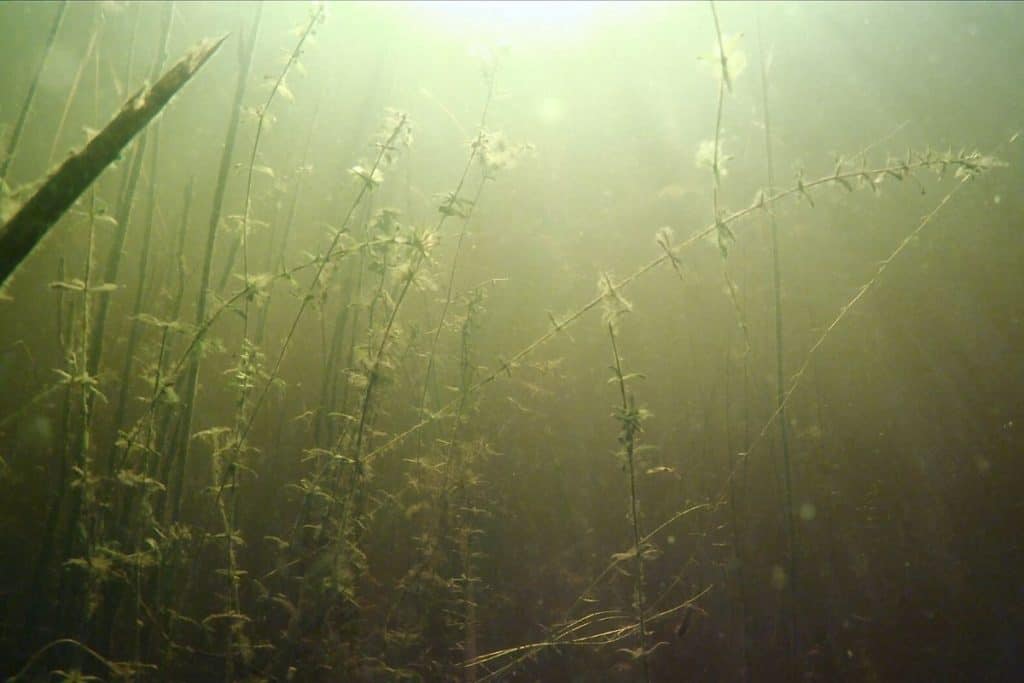
Thick Vegetation Just Under the Surface
There are many times when the thick weeds are just under the surface of the water. This may range anywhere from inches to several feet, yet the bass are still buried up in the stuff.
If the vegetation is vast and searching is required, I like to use soft plastics like a soft jerkbait to pull through it. A swimming worm is also a highly effective tool if the weeds are not too thick.
Once again, if the subsurface vegetation is sparse, then I will choose lures that can drop right into those patches and work their way to the bottom. Texas rigs and jigs are excellent tools for these situations.
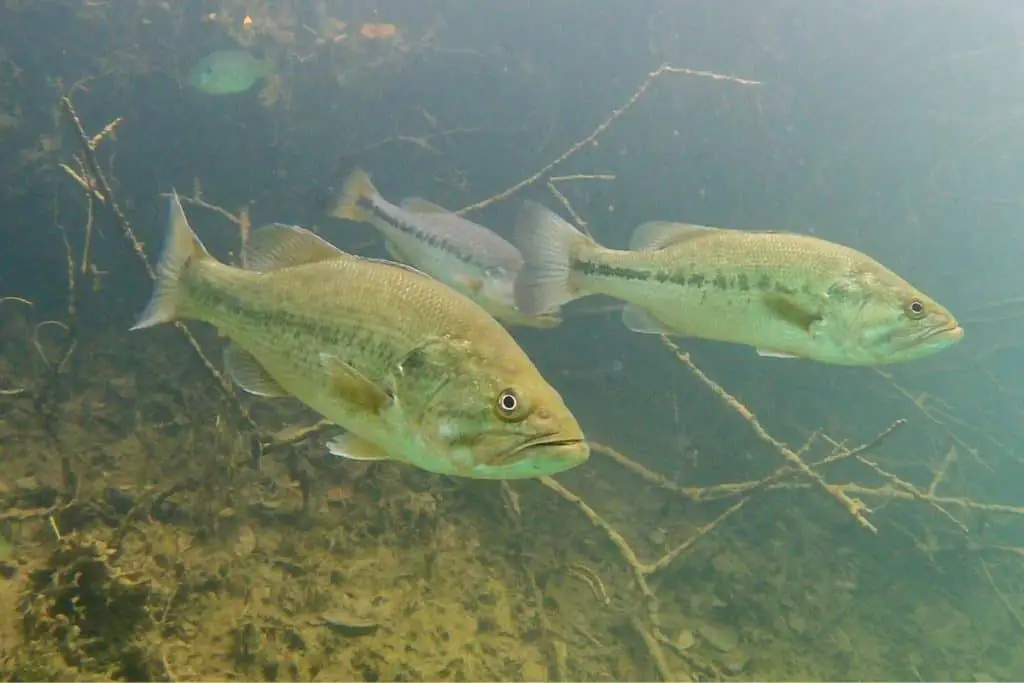
Bass Fishing Heavy Wood Cover
Fishing wood and brush are different from vegetation. There is no give. Ripping your lures free from a snag is often impossible.
For this reason, I love to use jigs with heavy weed guards or Texas rigs and keep the hooks Tex-posed on the back of the plastic. If you’re not familiar with Tex-posing, it involves pushing the hook point through to the back of the plastic, but then sticking the point back down into the plastic.
This type of rigging makes for more efficient hooksets, but the lure still comes through the heavy cover without snagging up.
Most Common Mistake When Fishing Heavy Cover – Especially Wood
Our lures are most efficient and effective when being presented one of two ways – horizontally or on the drop.
These are the natural situations bass will observe their prey. While horizontal movement represents swimming creatures within the water column, the vertical dropping represents something dying and falling through the water column
When fishing heavy cover, it is easy to have a lure start to drop vertically, then when the slack line starts to run out, the lure then pendulums back toward us.
This unnatural movement diminishes our chance for a bite.
To solve this problem an angler can either dip the rod tip as their lure falls or peel slack line. Either method will keep the lure dropping vertically until it hits the bottom. While doing this, it is important to keep watching the line to see if it twitches or jumps. If it does, then swing away with that hook set.
Don’t Be Afraid to Attack the Heavy Cover When Bass Fishing
It is intimidating to throw our lures deep into brush or way back into the vegetation.
Anglers hate to get snagged and lose the lures that are increasingly more expensive. To make the most of fishing heavy cover, we need to work more than just the edges of the brush and get in there.
It is amazing how deep bass can nestle up into the thickest stuff.
With the right line, reel, rod, and rigging methods, those lures will come back to you more often than they don’t. I promise.
Be safe out there and make sure to encourage someone today. You never know how you may change their life forever.
Isaiah 6:8
